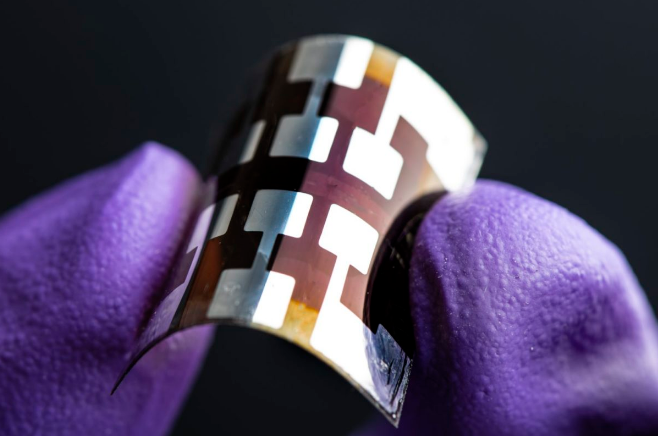Researchers at Oxford PV, an Oxford University spinoff that focuses on perovskites, have been working on an efficiency solution that they said can help to scale up solar more rapidly.
The group is using perovskites to squeeze more power out of solar cells, pushing past the “Shockley-Queisser” 26% efficiency barrier that is posed by conventional silicon materials.
Perovskites fulfill all the optoelectronic requirements for a PV cell, and can be manufactured using existing processes. Perovskites can be layered onto a conventional cell in tandem with silicon. These features, said the developers, make perovskites ideal plug-and-play materials to integrate with silicon technology.
Metal halide perovskites have been targeted by the research community for their properties, and have been under research and development for more than a decade. Perovskites are, in many ways, a foil to silicon, said the researchers. While silicon is a weakly absorbing material that requires hundreds of micrometers of thickness to fully absorb sunlight due to its indirect bandgap, perovskites are strongly absorbing, direct bandgap semiconductors. As such, they need less than a micrometer of material thickness.
Silicon requires energy-intensive fabrication processes to create high-purity single crystals necessary for low-defect densities, where perovskites are inherently defect-tolerant and can be processed at low-temperatures into polycrystalline cells.
While the two materials behave quite differently, the end result is two high-quality materials that can deliver power conversion efficiencies of around 26% by using low-cost fabrication routes.
The increase in efficiency created by perovskite-tandem cells can help to offset some of the carbon emissions needed to produce high-purity silicon used for conventional solar PV cells, said Oxford PV.
Combining the perovskites in tandem with silicon, rather than rebuilding a process for pure-perovskite or other material combination, allows for a faster and less costly scale-up of manufacturing. Furthermore, existing supply chains already contain the physical elements that comprise perovskite materials, paving a clear path to scale up the technology rapidly.
Higher-efficiency cells do exist, like the III-V multi-junction devices built by Spectrolab and Azur Space. However, these are typically used in outer space, where cost is less critical than minimizing wafer area. These cells can operate at 40% efficiencies, but are expensive, and currently cannot compete with the conventional silicon market in a way that tandem cells could.
Oxford PV has been researching tandem cells for seven years, and the group said it is now close to starting mass commercial production in a factory in Brandenburg, Germany. The International Technology Roadmap for Photovoltaics forecasts the entry of tandem cells into the market after 2023.






